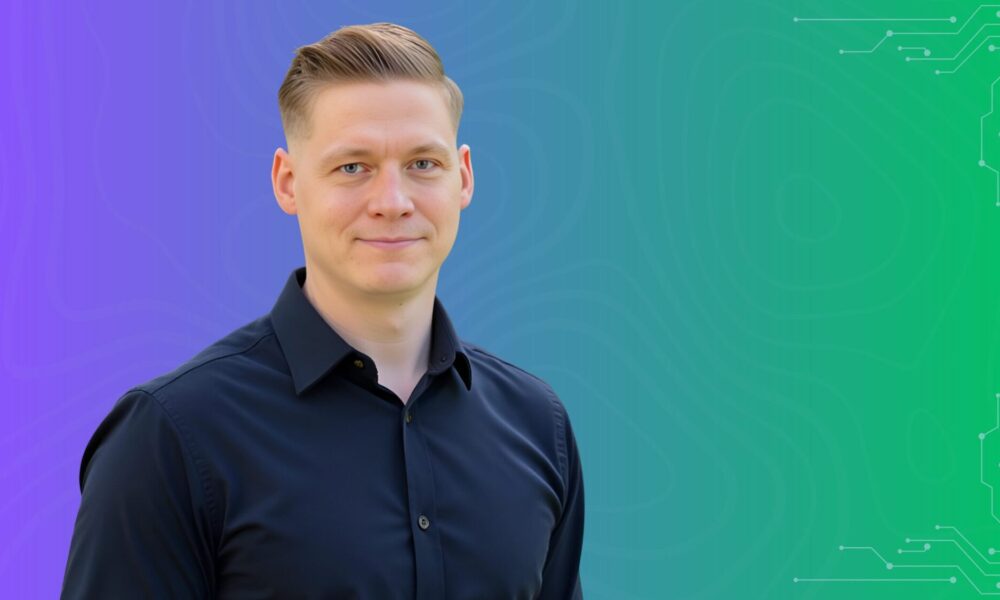Interview with Roman Martynenko, Fullstack Software Engineer, Founding Engineer, Henry AI

Can you introduce yourself and tell us about your role at Henry AI? What inspired you to focus on AI-driven products in the commercial real estate industry?
I’m Roman Martynenko, a Founding Engineer at Henry AI, where I help lead the development of AI-driven tools that streamline commercial real estate (CRE) workflows. My background is in full-stack software engineering, and over the years I’ve grown increasingly interested in building systems that not only function well but actually save people time and reduce repetitive, manual work.
What drew me to the commercial real estate space is how surprisingly underserved it has been by modern software, despite being a massive industry. CRE professionals still spend hours – sometimes days – on tasks like researching properties, compiling financial models, and building marketing decks. The opportunity to automate and improve these workflows with AI was immediately clear, and that’s exactly what we’re doing at Henry AI.
How did your journey in tech lead you to your current position as a Founding Engineer at Henry AI? What key experiences shaped your approach to building AI-driven products?
My path into this role has been shaped by years of building software that’s meant to solve real problems. I started my career working on frontend performance and user experience, learning how much of an impact good design and speed can have on how people interact with technology. Over time, I moved into full-stack roles, which gave me a more complete view of how systems are built and how data moves through them. That experience helped me think more holistically – not just about writing code, but about building systems that are actually useful.
The idea of using AI to reduce repetitive work became especially interesting to me as I started seeing how much time professionals in industries like real estate, healthcare, and finance spend just gathering and formatting information. It became clear that if we could use modern AI tools to take on that kind of heavy lifting, we could free people up to focus on the parts of their jobs that really matter. That shift in thinking – toward automation that feels seamless and genuinely helpful – is what led me to Henry, and it still shapes how I approach every feature we build.
You’ve mentioned Henry AI’s flat, engineering-centered team structure. How does this approach impact the development of your AI-driven products, particularly in terms of innovation and problem-solving?
The flat, engineering-centered structure at Henry has a huge impact on how we build and improve the product. Without layers of management or hand-offs between departments, engineers are deeply involved in understanding user problems, shaping ideas, and bringing solutions to life. We’re not just coding against a spec – we’re thinking through the problem, evaluating different approaches, and staying connected to the people actually using what we build. That kind of ownership leads to better decisions and faster iterations. It gives everyone on the team the freedom to explore, experiment, and adjust quickly based on real feedback. And because we’re close to the product and the user, we’re more likely to spot small friction points that make a big difference. This setup encourages curiosity, autonomy, and a shared sense of responsibility – and that’s what makes it possible to move fast without cutting corners.
Can you walk us through a specific example of how your team’s close connection to users led to a significant improvement or feature in your AI system? What was the process from observation to implementation?
One example that comes to mind is how we improved our deck editor after noticing users were spending extra time fine-tuning layouts generated by the AI. While the content was generally on point, people still wanted a way to better shape the output to match their style or specific client needs. Instead of making the AI try to guess every preference, we focused on giving users more flexibility – making it easier to adjust structure, content, and layout without losing the benefits of automation. The AI still handles most of the heavy lifting, but users now have just enough control to confidently finalize and send off high-quality materials.
That shift – based entirely on how people actually interacted with the product – made the workflow faster, less frustrating, and more aligned with how our users think. It’s a good example of how staying close to the user helps us improve not just the tech, but the overall experience.
User-focused automation is a key aspect of your work. How do you balance the power of AI automation with maintaining a user-friendly experience? Can you share a challenge you faced in this area and how you overcame it?
Balancing automation with a great user experience really comes down to respecting how people work. We use AI to handle the heavy lifting, but we also design for flexibility – so users can easily adjust and shape the output to fit their style and preferences.
Over time, we’ve found that automation is most effective when it feels personal, not generic. By learning from past behavior and giving users simple ways to tailor what the AI creates, we avoid that feeling of “fighting the tool.” It’s not about doing everything for the user – it’s about helping them move faster without losing control.
Finding that balance is never a one-time fix. It takes observation, iteration, and a willingness to pull back when automation starts getting in the way.
Looking ahead, what do you see as the next frontier in AI-driven products for industries like commercial real estate? How is Henry AI preparing for these future developments?
One of the most exciting shifts in AI right now is moving from simple tools to systems that can handle full workflows with less hand-holding. In commercial real estate, that could mean AI that not only creates a deck, but also pulls in the right data, runs financial models, and shapes the output to fit a specific client or deal—with minimal input.
At Henry, we’re already building in that direction. We’re working on systems that pick up on context across deals, adjust to how each person works, and help with actual decision-making—not just surface-level tasks. The goal is to build tools that feel like part of the team, not just software. As we move forward, it’s still about the same thing: giving people back their time so they can focus on the work that really matters.
Thanks for sharing your knowledge and expertise. Is there anything else you’d like to add?
Thanks for the great questions – these are important conversations to be having right now. If there’s one idea I’d leave people with, it’s that AI isn’t here to replace people – it’s here to empower them. The most exciting part of working with this technology is seeing how it can unlock new kinds of work that just weren’t practical before. Whether it’s automating hours of repetitive tasks or making complex decisions more manageable, AI gives people the chance to focus on higher-value, more creative work. It’s not about doing the same things faster – it’s about opening the door to what wasn’t even possible before. That’s the real opportunity.
Source: Interview with Roman Martynenko, Fullstack Software Engineer, Founding Engineer, Henry AI



